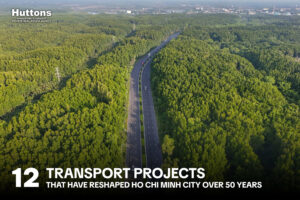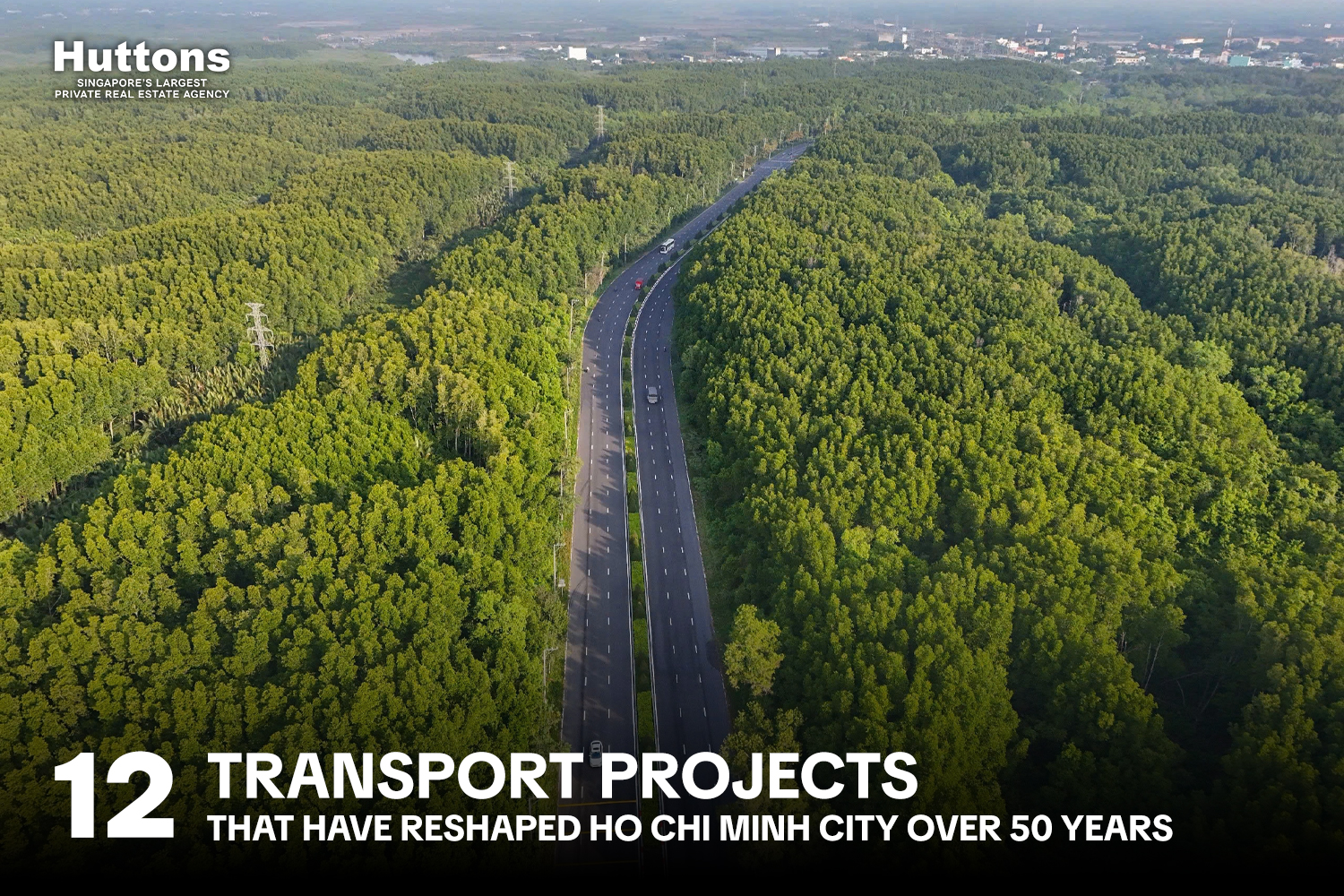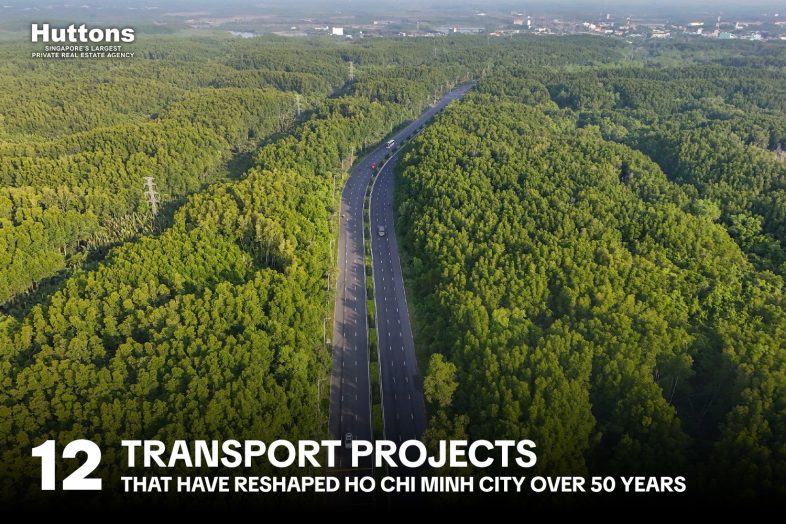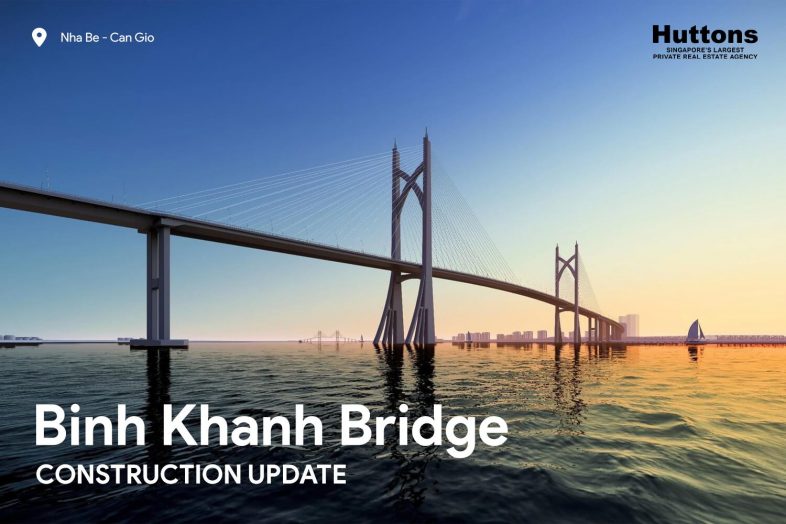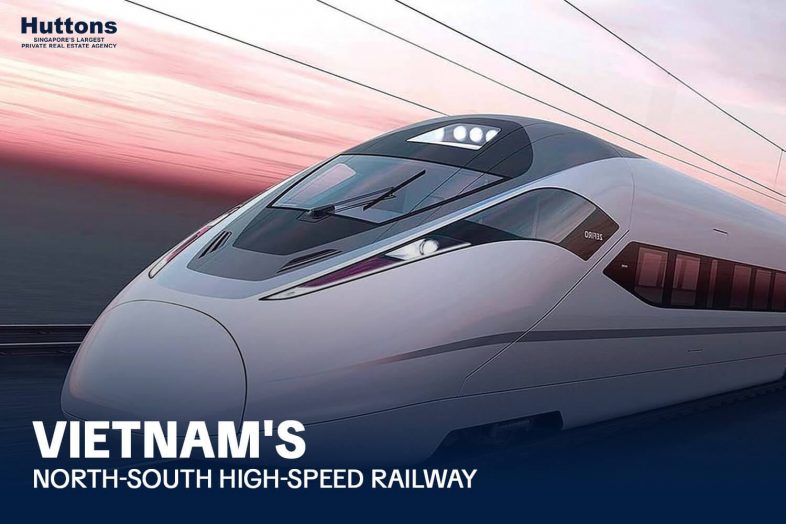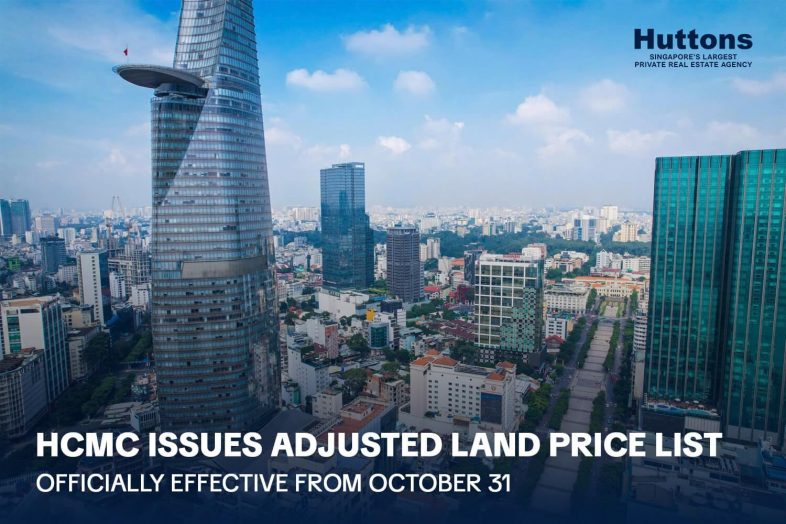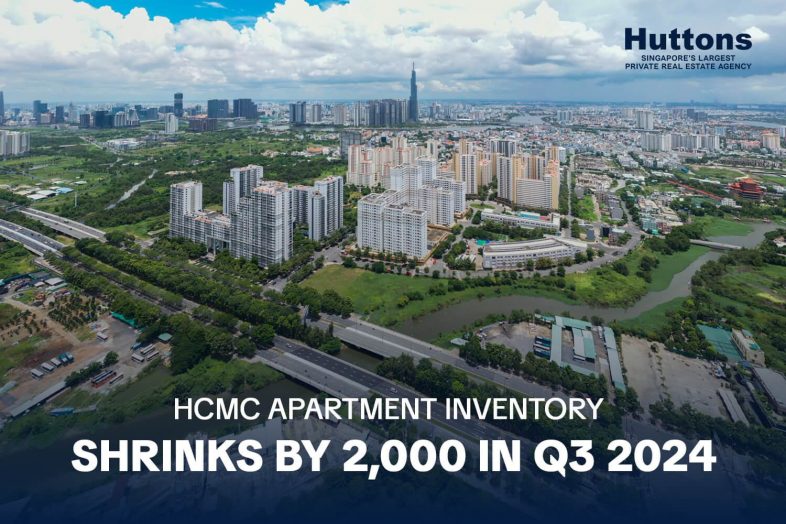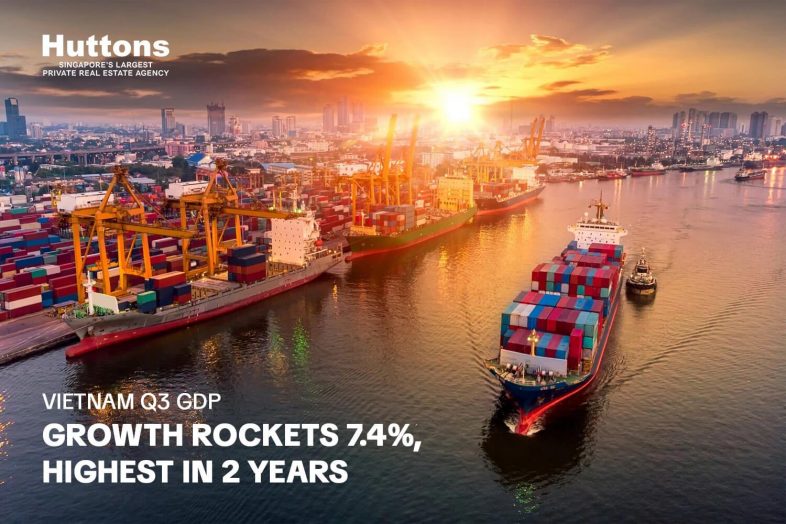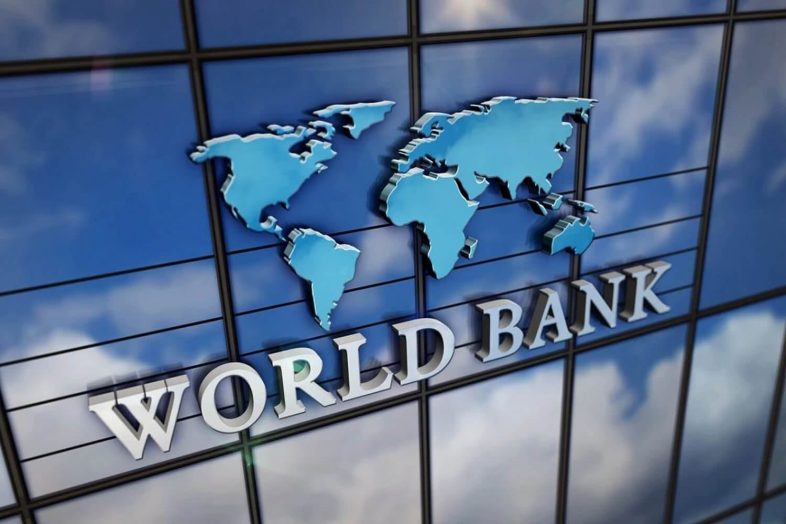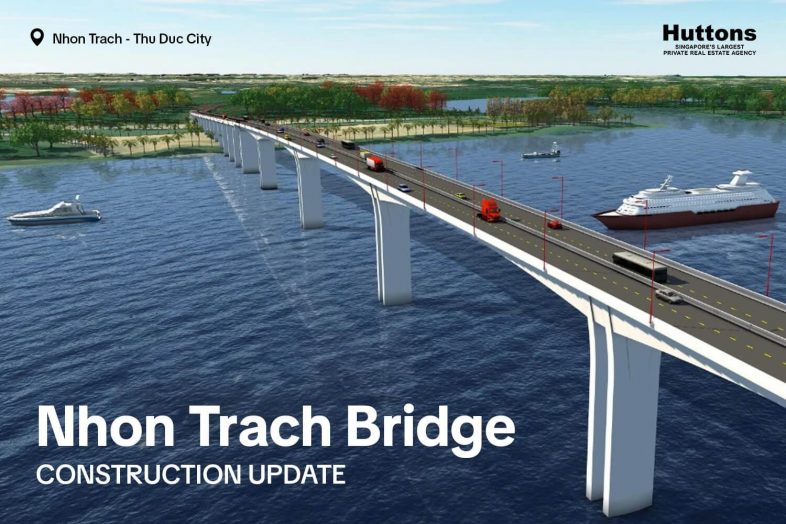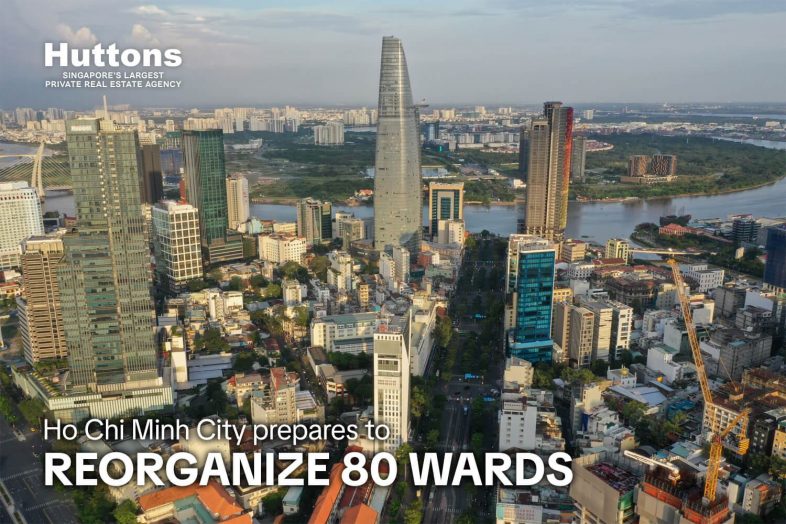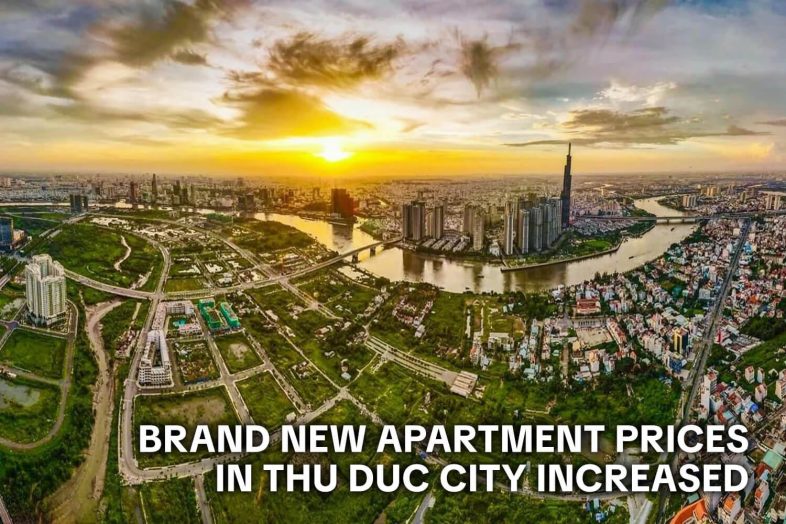The North-South High-Speed Railway project is one of Vietnam’s most significant infrastructure megaprojects, establishing a seamless connection between the country’s two major economic hubs, Hanoi and Ho Chi Minh City. The project spans 20 provinces and cities, featuring 23 passenger stations (including two stations that serve both passengers and cargo) and 5 cargo stations.
With a maximum speed of up to 350 km/h, this railway line promises to significantly reduce travel time between the two major cities, contributing to socio-economic development, alleviating pressure on the road transport system, and enhancing passenger transport capacity.
Introduction to the North-South High-Speed Railway
The North-South High-Speed Railway project is one of Vietnam’s largest infrastructure projects, aimed at comprehensively upgrading the national transportation system and alleviating pressure on existing road and air routes. This strategic project aims to rapidly connect key economic regions and drive economic and social development.

The project was proposed in the context of increasing transport demand between the regions of Hanoi and Ho Chi Minh City. With a total length of nearly 1,541 km, this railway line not only connects Hanoi and Ho Chi Minh City but also links major provinces and cities along the route. The main goal of the project is to develop an efficient, safe, and environmentally friendly transportation system, contributing to Vietnam’s sustainable development.
The project is expected to be divided into multiple phases, with priority given to constructing sections with high transport demand, such as Hanoi – Vinh and Nha Trang – Ho Chi Minh City. The high-speed railway system will utilize modern technology, meeting international standards for safety and passenger comfort.
Detailed Information about the North-South High-Speed Railway
Scale of the North-South High-Speed Railway
The North-South High-Speed Railway has a total length of approximately 1,541 km, starting from Ngoc Hoi Station (Hanoi) to Thu Thiem Station (Ho Chi Minh City), passing through 20 provinces and cities, with 23 passenger stations spaced an average of 67 km apart and 5 cargo stations. With a maximum design speed of up to 350 km/h and an operating speed of 320 km/h, this railway will significantly reduce travel time between economic centers to about 5-6 hours, compared to over 30 hours currently using conventional rail.
This railway line will use a standard gauge of 1,435 mm, incorporating modern technologies in control and operation to ensure safety and efficiency for passengers. The priority sections in the initial phase of the project will include Hanoi – Vinh and Nha Trang – Ho Chi Minh City.

The project will pass through 20 provinces and cities, including Hanoi, Ha Nam, Nam Dinh, Ninh Binh, Thanh Hoa, Nghe An, Ha Tinh, Quang Binh, Quang Tri, Thua Thien Hue, Da Nang, Quang Nam, Quang Ngai, Binh Dinh, Phu Yen, Khanh Hoa, Ninh Thuan, Binh Thuan, Dong Nai, and Ho Chi Minh City.
According to the consulting unit, the distance between stations will ensure a minimum spacing of approximately 30 km. Depending on the schedule of each train, stops will be arranged at the stations, meaning not all trains will stop at every station. From Hanoi to Ho Chi Minh City, there are currently 19 cities with a population of 500,000 or more, including 2 special cities and 17 first-class cities, ensuring good connectivity with the public transportation system and effective utilization of infrastructure. The line is expected to be completed within 8 years.
The project requires an estimated land use of approximately 10,827 hectares. Of this, about 3,655 hectares are rice cultivation land (including 3,102 hectares of wet rice fields with two or more crops); approximately 2,567 hectares are forestry land; and around 4,605 hectares are other types of land as regulated by land laws. The number of people to be resettled is approximately 120,836.
Technology and Technical Standards
The North-South High-Speed Railway project will utilize advanced technology and standards in the global railway industry, featuring modern control and safety systems to ensure synchronization, efficient operation, and safety. The trains will use railway electrification and will run on double tracks, ensuring continuous and safe traffic flow.
This project has been informed by the Ministry of Transport (GTVT), which consulted models from 22 countries and learned from the experiences of 6 countries that have mastered high-speed railway technology. The train technology will be similar to the high-speed rail systems in developed countries such as Japan (Shinkansen), South Korea (KTX), and China (CRH). This not only ensures operational accuracy and safety but also enhances the passenger experience with high speeds and comfort.
Time and Implementation Schedule
According to the Ministry of Transport (GTVT), the North-South High-Speed Railway project is planned to be implemented in multiple phases, prioritizing the construction of sections with high transport demand. Phase 1 will focus on the sections from Hanoi to Vinh and from Nha Trang to Ho Chi Minh City. For Phase 1, land clearance will be carried out, contractors will be selected, and construction is expected to start at the end of 2027, with completion anticipated in 2032.
The agencies aim to present the proposal for investment in the North-South High-Speed Railway to the National Assembly for approval at the session in October 2024. In the following two years, 2025-2026, the Ministry will organize bidding to select international consultants, conduct surveys, and prepare a pre-feasibility study report.
After the groundbreaking of Phase 1, the remaining sections from Vinh to Nha Trang will commence construction in 2028-2029. The entire North-South High-Speed Railway line is expected to be completed and put into operation in 2035, with a total projected completion time of 11 years from 2024.
Finance and Implementation Funding
Based on the scale of the economy, the ability to mobilize funding sources, and international experience, to ensure the successful investment of the project, the government proposes a public investment model.

The government stated that experiences from 27 projects worldwide indicate that investment through public-private partnership (PPP) methods is not more effective than public investment. "Transferring risks to the private sector is ineffective," the government reported, noting that some countries that invested through PPP methods were unsuccessful and had to nationalize or significantly increase state support for PPP projects, such as in Taiwan (China).
According to the government, some projects worldwide that apply the PPP method primarily focus on investments in commercial areas, central stations, or investments in operating vehicles for certain effective sections of the railway line.
Through the review of investment options, technology, techniques, scale, and referencing the investment costs of high-speed railways in other countries, along with consulting for the pre-feasibility study report, the Ministry of Transport calculates the total preliminary investment amount to be approximately 1,713,548 billion VND (equivalent to 67.34 billion USD).
Of this amount, it is estimated that the compensation, support, and resettlement costs for residents will be 150,148 billion VND (approximately 5.9 billion USD); construction costs will be 846,014 billion VND (approximately 33.25 billion USD). Equipment costs will be 280,771 billion VND (approximately 11.03 billion USD); project management costs will be 20,282 billion VND (approximately 0.8 billion USD); and investment construction consulting costs will be 91,946 billion VND (approximately 3.61 billion USD)…

Regarding the total investment of 67.34 billion USD for the project, Deputy Minister of Transport Nguyen Danh Huy stated that, according to the proposed plan, the government budget is expected to be allocated during the medium-term public investment plans to complete the project by 2035.
The project will be allocated funding over approximately 12 years, averaging about 5.6 billion USD per year, equivalent to approximately 16.2% of public investment during the 2026-2030 period if Vietnam maintains the current medium-term public investment ratio. According to the assessment of public debt safety indicators when implementing the project, by 2023, all three criteria—public debt, government debt, and foreign debt—will be below the allowable levels.
Regarding the workforce, the North-South High-Speed Railway project is expected to employ approximately 180,000 people for construction, around 13,880 people for operation and exploitation, about 700 people working in management agencies, and approximately 1,200 consulting engineers.
Information on ticket prices for the North-South High-Speed Railway
Ticket prices for the North-South High-Speed Railway are expected to be divided into three levels to match the purchasing power of the public, as well as differing demands and levels of comfort.
The ticket prices per kilometer of travel are expected to be as follows:
- First-Class Ticket: 0.18 USD ~ 4,573 VND (approximately VIP class)
- Second-Class Ticket: 0.074 USD – 1,880 VND
- Third-Class Ticket: 0.044 USD ~ 1,118 VND
Thus, for the entire route from Hanoi to Ho Chi Minh City, the ticket prices are approximately 6.9 million VND for first class, 2.9 million VND for second class, and 1.7 million VND for third class.
Locations of the 26 stations on the North-South High-Speed Railway

Route and Locations of the North-South High-Speed Railway Stations
Below is the proposed table of 26 stations on the North-South High-Speed Railway line:
| No. | Province | Number of station | Station | Location |
|---|---|---|---|---|
| 1 | Hanoi | 2 | Ngoc Hoi Passenger and Cargo Station | Lien Ninh and Ngoc Hoi Communes, Thanh Tri District |
| 2 | Ha Nam | 1 | Phu Ly | Liem Tuyen and Liem Tiet Communes, Phu Ly City |
| 3 | Nam Dinh | 1 | Nam Dinh | My Hung Commune, My Loc District |
| 4 | Ninh Binh | 1 | Ninh Binh | Khanh Thuong Commune, Yen Mo District |
| 5 | Thanh Hoa | 1 | Thanh Hoa | Dong Tan and Dong Linh Commune, Thanh Hoa City |
| 6 | Nghe An | 1 | Vinh | Hung Tay Commune, Hung Nguyen District |
| 7 | Ha Tinh | 3 | Ha Tinh | Thach Dai Commune, Thach Ha District |
| Vung Anh Passenger and Cargo Station | Ky Hoa Commune, Ky Anh District | |||
| 8 | Quang Binh | 1 | Dong Hoi | Nghia Ninh Commune, Dong Hoi City |
| 9 | Quang Tri | 1 | Dong Ha | Dong Luong Ward, Dong Ha City |
| 10 | Thua Thien Hue | 1 | Hue City | Phu My Commune, Phu Vang District |
| 11 | Da Nang | 1 | Da Nang | Hoa Son Commune, Hoa Vang District |
| 12 | Quang Nam | 2 | Tam Ky | Truong Xuan Ward, Tam Ky City |
| Chu Lai Cargo Station | Nui Thanh Commune | |||
| 13 | Quang Ngai | 1 | Quang Ngai | Quang Phu Ward, Quang Ngai City, and Nghia Ky Commune, Tu Nghia District |
| 14 | Binh Dinh | 2 | Bong Son | Hoai Tan Commune and Bong Son Town, Hoai Nhon District |
| Dieu Tri | Phuoc An Commune, Tuy Phuoc District | |||
| 15 | Phu Yen | 1 | Tuy Hoa | Hoa Thanh Commune, Dong Hoa Town |
| 16 | Khanh Hoa | 2 | Van Phong Cargo Station | Ninh An Commune, Ninh Hoa Town |
| Dien Khanh | Dien Thanh Commune, Dien Khanh District | |||
| 17 | Ninh Thuan | 1 | Thap Cham | Phuoc My Ward, Phan Rang City |
| 18 | Binh Thuan | 2 | Phan Ri | Phan Hoa Commune, Bac Binh District |
| Muong Man | Muong Man Commune, Ham Thuan Nam District | |||
| 19 | Dong Nai | 2 | Long Thanh | Binh Son Commune, Long Thanh District |
| Trang Bom Cargo Station | Xa Quang Tien, huyen Trang Bom | |||
| 20 | TP HCM | 1 | Thu Thiem | An Phu Ward, Thu Duc City |
Table of 26 Proposed Stations in the North-South High-Speed Railway Project. Source: VnExpress
North-South High-Speed Railway Line in Ho Chi Minh City – Thu Thiem Station
Tuyến đường sắt tốc độ Bác Nam tại Hà Nội – Ga Ngọc Hồi
Benefits of Operating the Project
The North-South High-Speed Railway Project is being built with several strategic objectives, the most important of which is to address the increasing transportation demand between major economic centers such as Hanoi, Da Nang, and Ho Chi Minh City. The project's aims include:
Enhancing Regional Connectivity and Sustainable Development: The project will help reduce the distance between regions, especially between underdeveloped areas and major cities. This will create a balance in economic and social development among provinces and cities. Additionally, localities along the railway line will have greater opportunities for development due to improved connectivity.
Reducing Pressure on Road and Air Transportation: Current national highways are under significant pressure from vehicle traffic, particularly on National Route 1A. Furthermore, the air transport system is also facing overload during peak periods.
Saving Time and Costs:: The high-speed railway will significantly reduce travel time, with journeys from Hanoi to Ho Chi Minh City taking only about 5-6 hours. Rail transport is a more cost-effective option compared to air and road transport, especially for large volumes of passengers and goods. (To transport around 15,000 – 16,000 passengers per hour, the road would require a land width of about 75 meters, while the high-speed railway only needs about 25 meters, just one-third of that required for road transport.)
Environmental Friendliness: The high-speed railway is a more environmentally friendly mode of transport compared to road and air travel, as it operates entirely on electricity, helping to minimize CO2 emissions (with CO2 emissions being 8.5 times lower than those of airplanes and 3.7 times lower than cars).

The criteria for comparison include carbon dioxide (CO₂) emissions, energy resource consumption, particulate matter, nitrogen oxides (NOₓ), and non-methane hydrocarbons (NMHC). Among these, airplanes produce the highest emissions across all criteria, while trains are the most environmentally friendly mode of transport, with the least emissions and resource consumption. This highlights the impact of different transportation methods on global warming and human health.
Safety and Efficiency: With modern control systems, high-speed rail is considered a safe mode of transport, minimizing traffic accidents compared to road transport. The damage caused by traffic accidents in Vietnam each year is approximately 2.9% of the national GDP; the high-speed rail on the North-South corridor is expected to save about 849 million USD in accident-related costs by 2040, and approximately 1.906 billion USD by 2050.
Enhancing Regional Competitiveness: Positioning Vietnam on the map of modern transportation worldwide, attracting foreign investment.
Challenges and Issues Encountered
According to the proposed plan, the North-South high-speed railway is expected to break ground in 2027 and aims to complete the entire route by 2035. One question arises: Is an 8-year construction period sufficient for a "mega project"? Regarding this issue, Deputy Minister Nguyễn Danh Huy emphasized that the biggest obstacle for basic construction projects mainly lies in the land clearance stage. Many investors have been sued by contractors for delays in land clearance. However, with the North-South high-speed railway, we are determined to carry out the project with strong political will.

Mr. Huy also stated that, although we do not yet have experience in building high-speed railways, we currently have a team capable of handling the entire infrastructure. For the cable-stayed bridge, we have mastered the entire technology, such as the My Thuan 2 Bridge, where the design and construction were 100% local. Regarding tunnels, companies like Đèo Cả, Sông Đà 10, and Xuân Hải have the capability to manage everything independently. As for the trains, we have upgraded all old carriages to high-quality ones, operating the SE21/SE22 trains between Ho Chi Minh City and Da Nang, which are very popular with tourists and often sell out.
We have two railway industrial facilities, such as the Di An Locomotive Factory and the Gia Lam Locomotive Factory, which developed during the French colonial period and now possess complete machinery and equipment, including modern equipment like CNC cutting machines. "The infrastructure component is estimated at about 34 billion USD in the project, so we cannot say we have nothing," Deputy Minister Nguyen Danh Huy affirmed.
Regarding the progress, Professor Dr. Hoang Van Cuong, a member of the National Assembly's Finance and Budget Committee, emphasized that this is a mega project, and if delayed, it will lead to cost overruns, thereby diminishing its effectiveness. "Therefore, it needs to be completed as soon as possible," Mr. Cuong stated. According to him, to ensure the project stays on schedule, there must first be a mechanism to concentrate resources and prioritize funding, preventing any situation of capital shortages.
Comparison with International High-Speed Rail Projects
High-speed rail has been around the world for many decades and is increasingly becoming a trend as the demand for travel rises. However, the investment cost for infrastructure is quite significant.
High-speed rail in China
China has the largest high-speed rail network in the world. Chinese officials conceived the idea for this mode of transportation in 1978. However, it wasn't until 30 years later that the first high-speed rail line began operations, thanks to technology transfers from Japanese, Canadian, German, and French companies. Currently, China boasts over 42,000 kilometers of high-speed rail across the country.
The Beijing–Shanghai High-Speed Railway (Jinghu High-Speed Railway) is one of the busiest and most important lines, stretching 1,318 km and connecting two of the country's major economic regions. This line operates two types of trains, with a maximum speed of 350 km per hour, significantly reducing travel time between the two cities to under 5 hours.
In terms of ticket prices, the second-class ticket costs between 570 and 660 Chinese yuan (81-94 USD), while the first-class ticket ranges from 960 to 1,000 yuan, and the business class ticket is priced between 1,800 and 2,300 yuan. Calculating per kilometer, the business class ticket costs 0.2 USD, the first-class ticket is 0.1 USD, and the third-class ticket is 0.06 USD.
High-speed rail in Taiwan
he Taiwan High Speed Rail is a high-speed rail line running approximately 350 km (217 mi) along the western coast of Taiwan, from the capital city of Taipei to the southern city of Kaohsiung. With construction and operation managed by a private company, the Taiwan High Speed Rail Corporation, it was considered one of the largest private rail construction projects in the world at the time of its construction. The system is primarily based on Japan's Shinkansen.
Tickets for the Taiwan High Speed Rail are divided into two classes – standard and business. For a full trip from Nanka to Zuoying, which is 345 km long, the fare for the standard class is NT$1,530, while the business class ticket costs NT$2,500. On average per km, these two classes are priced at approximately $0.14 and $0.23, respectively.
High-speed rail in Japan
The Asian country renowned for its high-speed rail is Japan. The Shinkansen high-speed train system is currently managed by the Japan Railways Group (JR) and operates on dedicated tracks at speeds of approximately 320 km per hour.
Japan is also the country with the world's first commercial high-speed rail line – the Tokaido Shinkansen – connecting the two major economic centers of the country, Tokyo and Osaka. This line began operation in 1964, with the initial goal of linking remote regions to the capital, supporting socio-economic development.
However, the longest line here is the Tohoku Shinkansen, connecting Tokyo with Aomori City, with a total length of 674 km. Ticket prices for this line are divided into three classes. The lowest is 17,470 yen, first-class seats are 23,540 yen, and Gran Class seats are 28,780 yen. Average ticket prices for high-speed rail in Japan are 0.18 USD, 0.24 USD, and 0.30 USD, respectively for each class.
High-speed rail in Indonesia
At the end of 2023, Indonesia inaugurated Whoosh, the first high-speed railway in Southeast Asia, which President Widodo praised as a "symbol of modernization." With a maximum speed of 350 km/h, the Whoosh train can travel from the capital Jakarta to the capital of West Java province, Bandung, in 45 minutes. This 140 km journey previously took about 2 to 3 hours by train.
This high-speed railway project is part of China's Belt and Road Initiative, a program launched in 2012 that includes various infrastructure projects supported by Beijing. The project is being constructed by PT KCIC, which consists of four state-owned Indonesian companies in collaboration with the China International Railway Corporation.
According to information on the website of the company operating the high-speed train system, the current ticket prices are 225,000 rupiah for standard class, 450,000 rupiah for business class, and 600,000 rupiah for first class. On average, the ticket prices per kilometer are approximately 0.11 USD, 0.20 USD, and 0.28 USD, respectively.
High-speed rail in France
France is one of the first countries in the world to have high-speed rail. The TGV system was put into operation in 1981 and typically operates at an average speed of around 320 km per hour. The TGV connects cities within France and travels to neighboring countries such as Belgium, Luxembourg, Germany, Italy, and Spain.
Paris – Lyon is the first high-speed rail line in Europe and the most popular in France, spanning over 400 km. Depending on whether passengers choose budget or premium services, first-class or second-class seats, and the time of departure, ticket prices will vary. Second-class tickets range from approximately 35 to 109 euros, while first-class tickets cost between 83 and 152 euros. On average, the price per kilometer is around 0.1 to 0.4 USD.
High-speed rail in German
In Germany, the Cologne – Frankfurt line is currently one of the most important high-speed rail lines in the country, connecting two centers of commerce and industry. This line was built in phases from 1995 to 2002, with a total cost of approximately 6 billion euros.
Depending on the class of seat and the type of train operated, ticket prices range from approximately 50 to 100 euros. On average, for a distance of 180 km, the ticket price for first class is 0.386 USD per km, while for second class, it is 0.265 USD per km.
Comparison of high-speed rail ticket prices in different countries
(*) The ticket prices for the North-South high-speed rail line are proposed amounts.
| High-speed Rail | Ticket Price Avg. (USD/km) | Comparing Vietnam's prices with other countries (%) | ||||
|---|---|---|---|---|---|---|
| First-Class | Second-Class | Third-Class | First-Class | Second-Class | Third-Class | |
| North - South (Vietnam) (*) | 0,18 | 0,074 | 0,044 | – | – | – |
| Beijing - Shanghai (China) | 0,199 | 0,099 | 0,059 | 89 | 75 | 75 |
| Tohoku (Japan) | 0,283 | 0,141 | – | 63 | 52 | – |
| Jakarta – Bandung (Indonesia) | 0,261 | 0,196 | 0,109 | 68 | 38 | 41 |
| Cologne – Frankfurt (German) | 0,386 | 0,265 | – | 46 | 28 | – |
Table comparing high-speed rail ticket prices in different countries. Source: VnExpress
Infographic overview of the North-South high-speed railway

Frequently Asked Questions (FAQ)
1. When will the North-South high-speed rail project be completed?
It is expected to be divided into several phases, with Phase 1 including the Hanoi – Vinh line and the Ho Chi Minh City – Nha Trang line scheduled to be implemented in 2027 and expected to be completed in 2032. The remaining phases are anticipated to complete the entire route by 2035.
2. What is the total length of the North-South high-speed railway project?
The project has a total length of 1,545 km, connecting Hanoi to Ho Chi Minh City.
3. How many stations are there in the North-South high-speed rail project?
The project includes 26 stations, comprising 23 passenger stations and 5 cargo stations (including one mixed-use station for both passengers and cargo).
4. What is the cost of this project and where is the funding sourced from?
The total estimated investment is approximately 1,713,548 billion VND (equivalent to 67.34 billion USD). Funding will primarily be raised from the state budget, international loans, and public-private partnerships.
5. How fast will the trains travel and how safe are they?
The maximum speed is 350 km/h, with an operating speed of 320 km/h, using electrified rail systems and advanced control systems to ensure safety.
6. How will the project affect the people along the route?
The project will create new economic opportunities but will also impact some residential areas; compensation and resettlement policies will be implemented.
7. What are the benefits of high-speed rail compared to other modes of transportation?
It shortens travel time from Hanoi to Ho Chi Minh City to just 5-6 hours, saves costs compared to air travel, is safer than road transport, and minimizes environmental pollution.
Source: Internet










